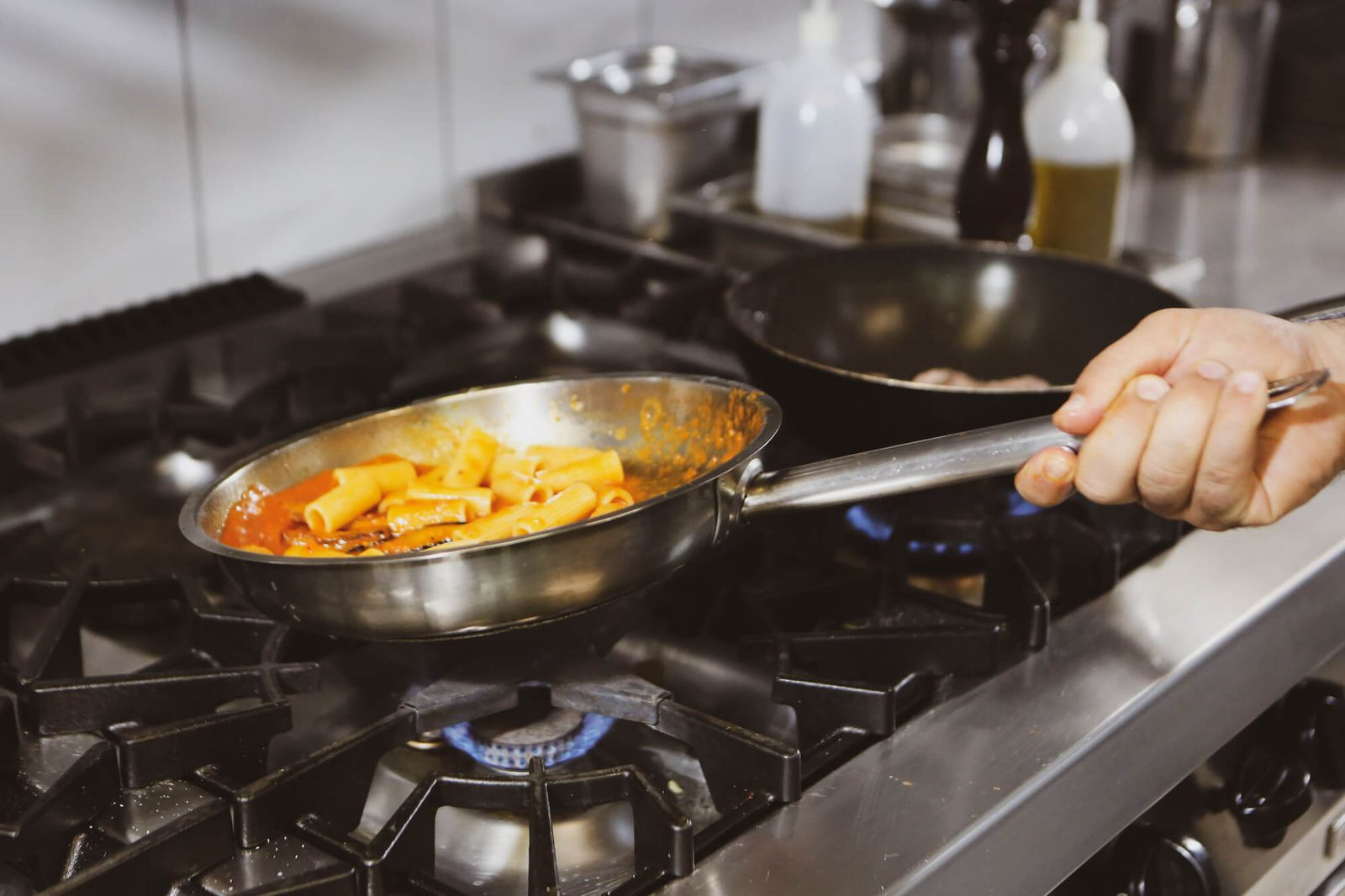Cooking on a gas stove offers a level of control unrivaled by electric models. Understanding advanced techniques can elevate your culinary skills to new heights when using frying pans on your gas stove.
In this micro-post, we'll explore these techniques and provide you with the knowledge to make the most out of your gas stove cooking experience.
In This Article
- Understanding Your Frying Pan
- Mastering Heat Control
- The Art of Searing and Sauteing
- Perfecting the Pan Flip
- Frequently Asked Questions
- Conclusion
- Further Reading
Understanding Your Frying Pan
Before we dive into the techniques, it's important to understand the tool you're working with - your frying pan. The material of your frying pan can greatly affect its heat retention and distribution. For instance, pans made from materials like cast iron, stainless steel, and copper have different properties that can influence your cooking.
When it comes to advanced cooking techniques, a non-stick frying pan is often a good choice. These pans, often coated with materials like Teflon, offer excellent heat distribution and make it easy to cook foods without them sticking to the pan. This is particularly useful when cooking delicate foods like fish or pancakes.
Mastering Heat Control
One of the key advantages of gas stoves is the ability to control heat levels with precision. When you adjust the knob on your stove, the flame size changes instantly, allowing you to increase or decrease heat on demand. This is particularly useful when using frying pans, as different cooking techniques and foods require different heat levels.
For instance, if you're searing a steak, you'll want to use high heat to create a delicious, caramelized crust. On the other hand, if you're gently sauteing vegetables, a lower heat will prevent them from burning and help retain their nutrients and crunch.
The Art of Searing and Sauteing
Searing and sauteing are two fundamental techniques in frying pan cooking. Searing involves cooking the surface of food at high heat until a caramelized crust forms. This technique is often used with meats and adds a depth of flavor that can't be achieved through other cooking methods.
Conversely, sauteing involves cooking food quickly in a small amount of oil over medium-high heat. This method is great for cooking vegetables, as it enhances their natural flavors while retaining their texture and nutritional value.
Perfecting the Pan Flip
The pan flip is a skill that many home cooks aspire to master. It involves tossing the food in the pan, so it flips over and cooks evenly. This technique looks impressive and ensures even cooking and prevents food from breaking apart as it might when using a spatula.
To perfect the pan flip, start by moving the pan forward and back on the burner to get the food sliding. Then flip the food in the air with a quick upward and backward jerk. It might take some practice, but once you've mastered it, you'll be flipping like a pro.
Frequently Asked Questions
What do professional cooks use for frying pans?
Professional cooks often use stainless steel or cast-iron frying pans for their durability and heat retention properties. Non-stick pans are also popular for certain dishes.
How do you cook best in a frying pan?
The key to cooking well in a frying pan is understanding heat control. Different foods and cooking techniques require different heat levels, so learning to adjust the heat on your stove is crucial.
What frying pan does Gordon Ramsay use at home?
Celebrity chef Gordon Ramsay is known to use non-stick frying pans in his home kitchen, particularly for dishes like scrambled eggs.
What is a frying pan with ridges used for?
A frying pan with ridges, also known as a grill pan, is used to simulate the effects of grilling. The ridges allow fat to drain away from the food, creating healthier dishes with a characteristic grilled appearance.
Conclusion
Mastering advanced techniques with frying pans on your gas stove can take your cooking to the next level. From understanding your tools to perfecting heat control and pan flipping, these skills will help you create delicious, restaurant-quality dishes in your own kitchen.
Further Reading
- Using Frying Pans Safely: Essential Tips for Gas Stoves - Get essential tips for using frying pans safely on gas stoves, helping you cook with confidence.
- Heat Distribution in Frying Pans: The Gas Stove Advantage - Understand the advantage of using gas stoves for optimal heat distribution in frying pans, improving your culinary creations.
- Columbia University Mailman School of Public Health delves into the safety concerns of gas stoves; get the insights in the article titled 'What Science Says About the Health Risks of Gas Stoves.'
- If you're looking for a new frying pan to practice these techniques, check out our article on the best frying pans for gas stoves.



